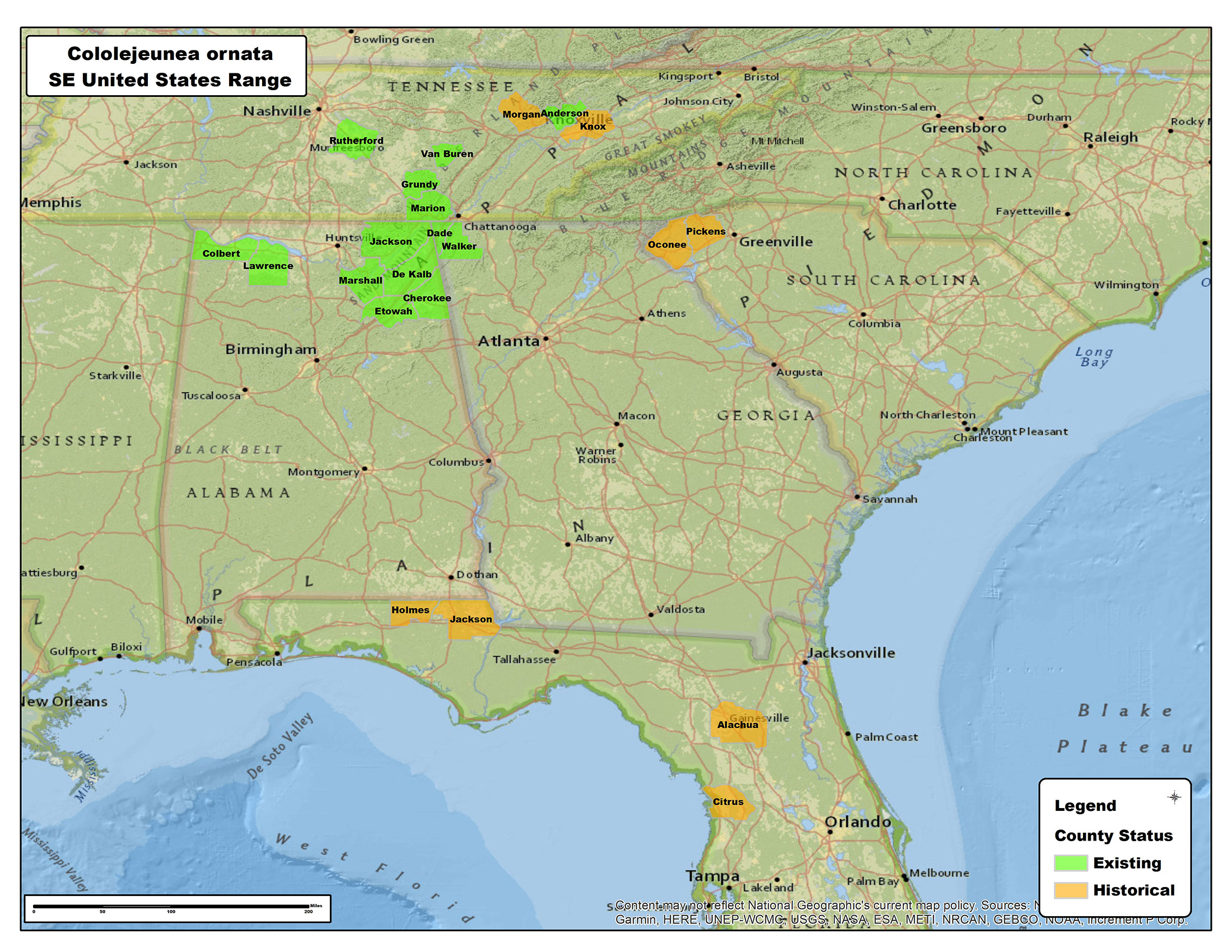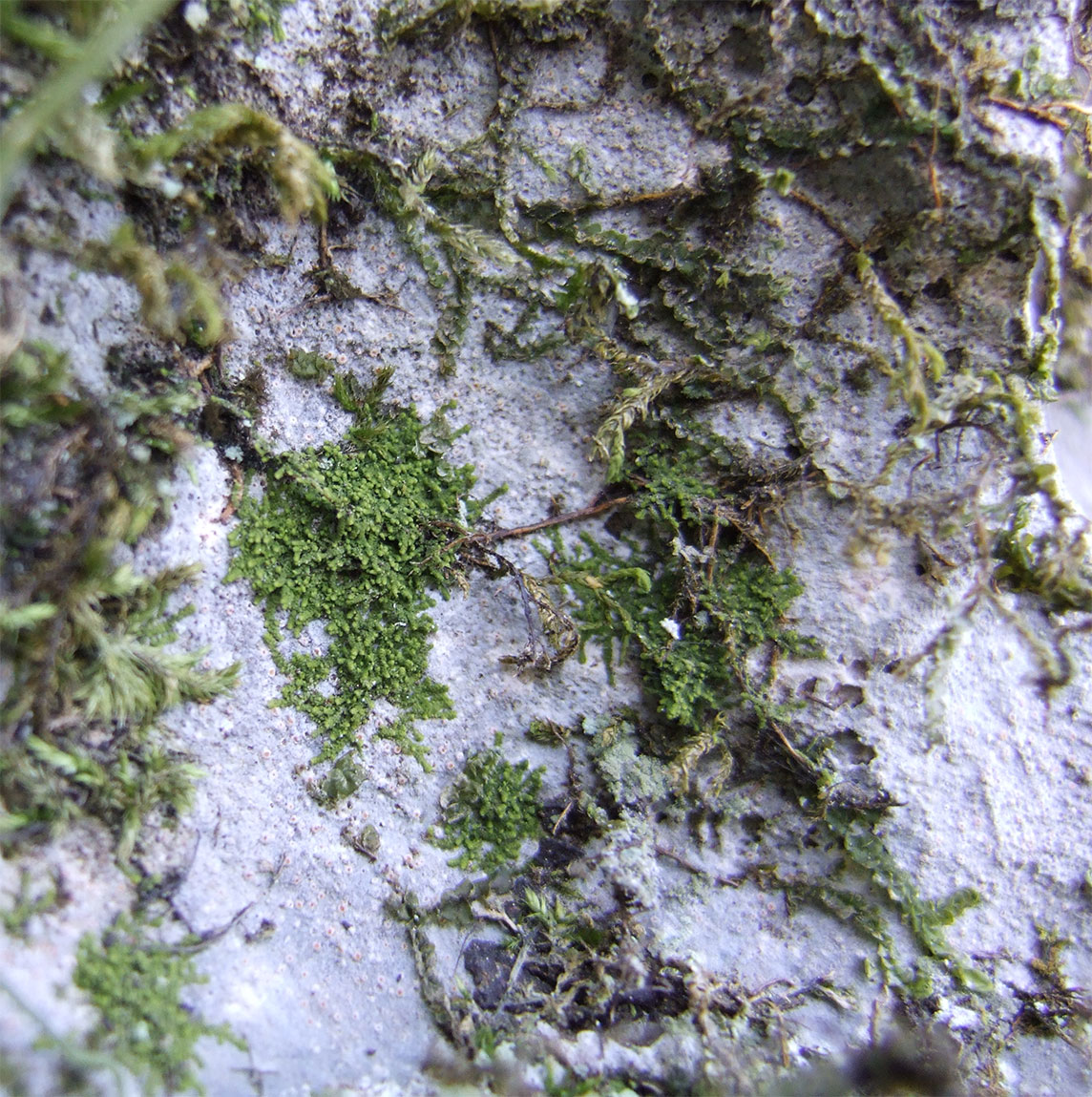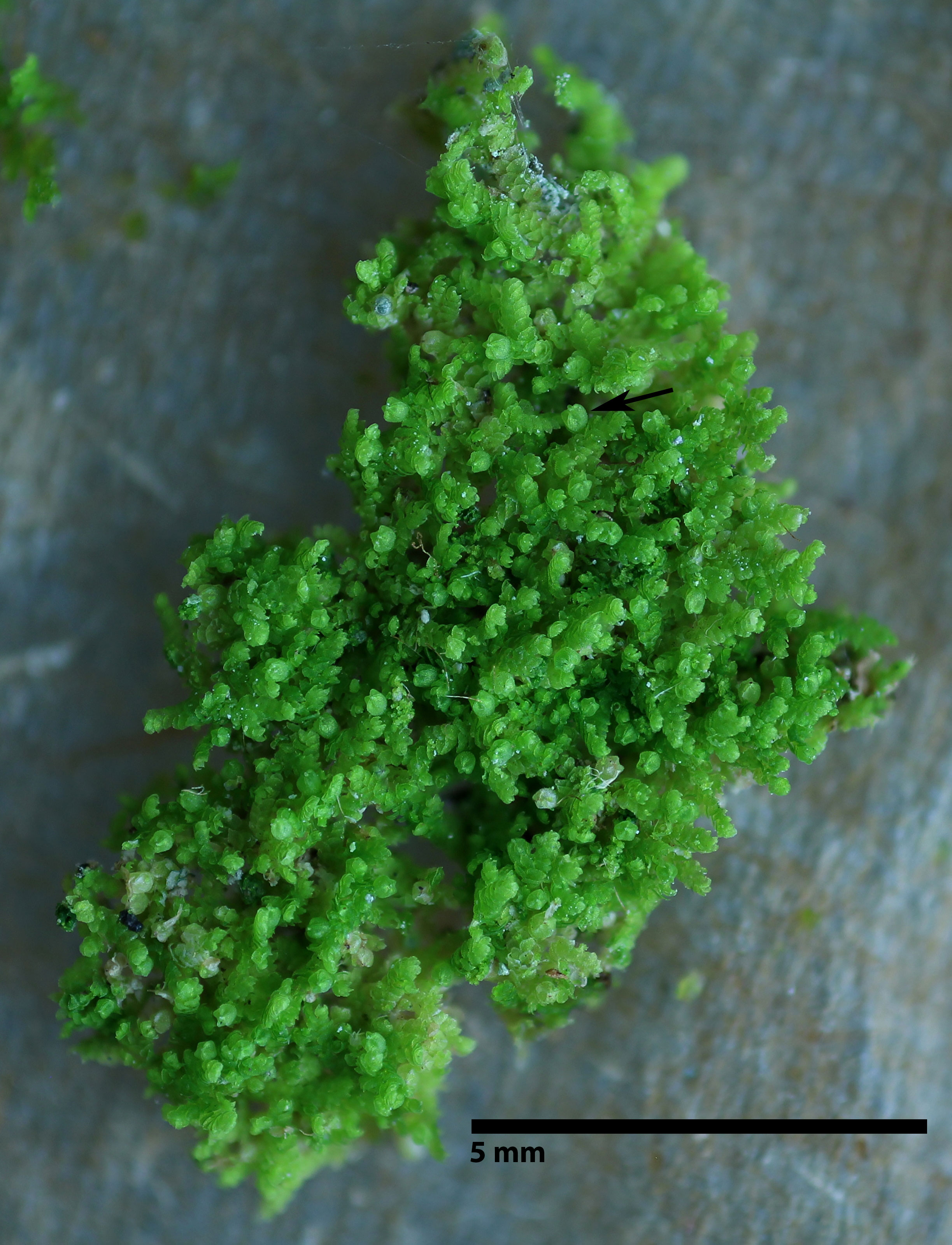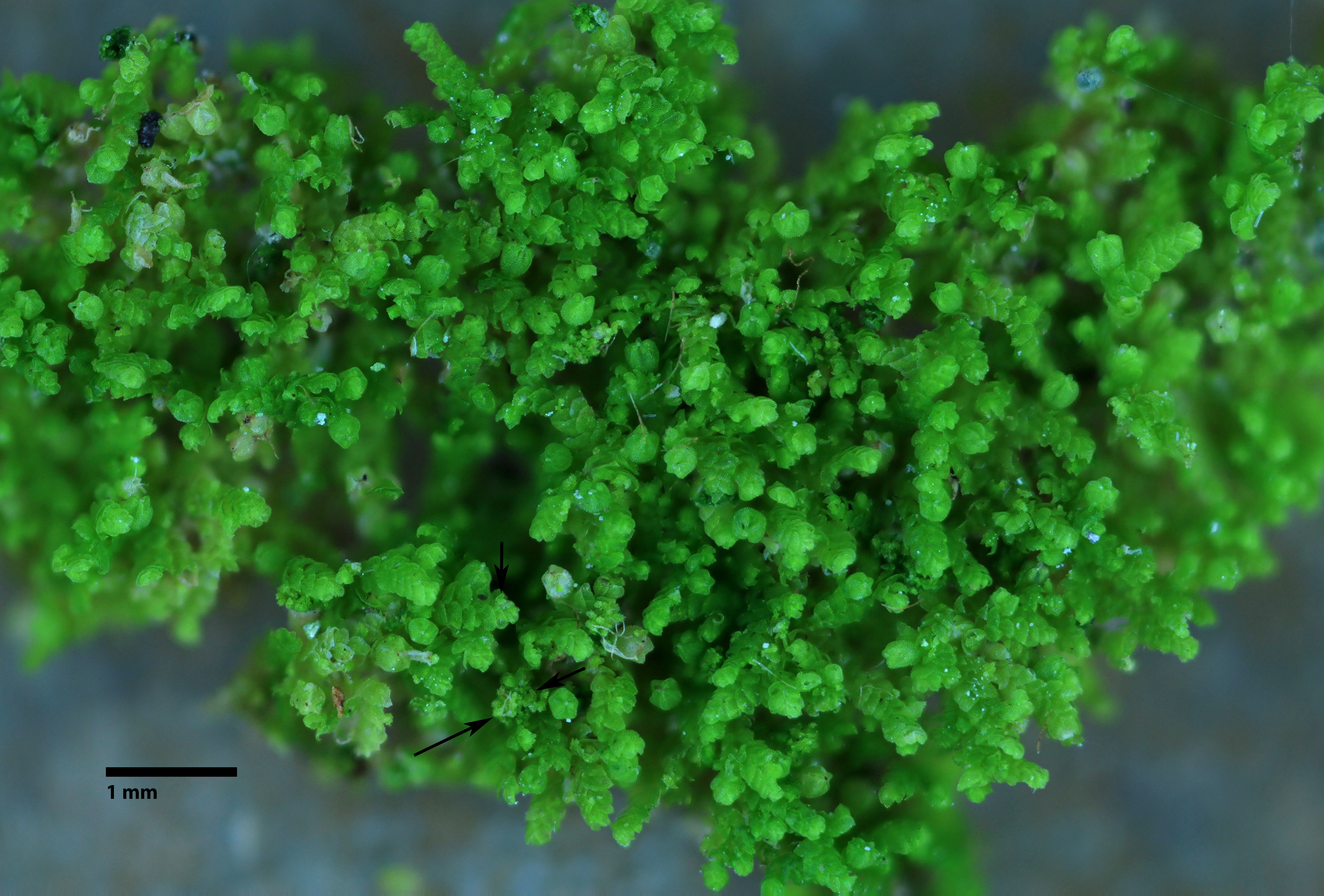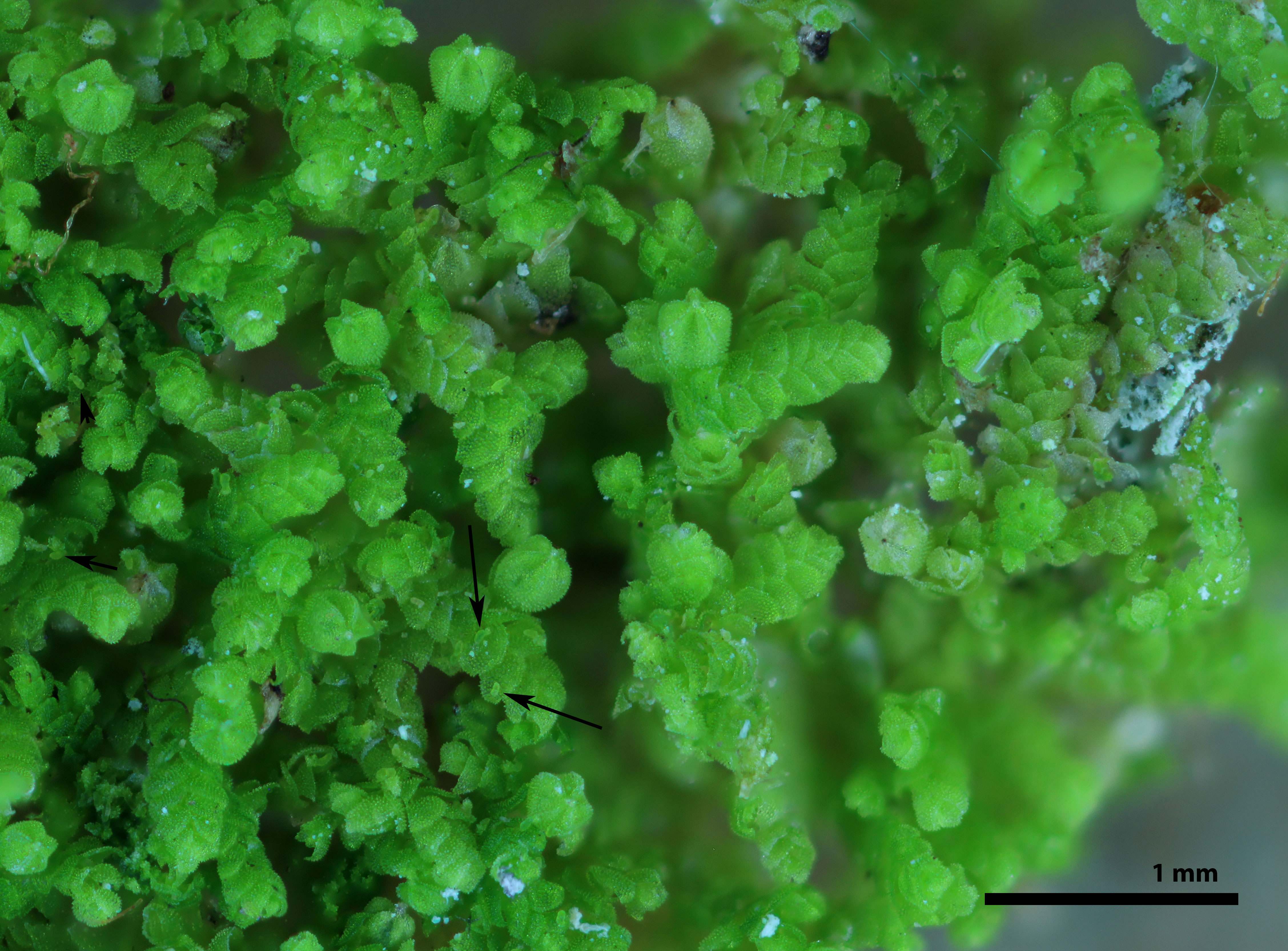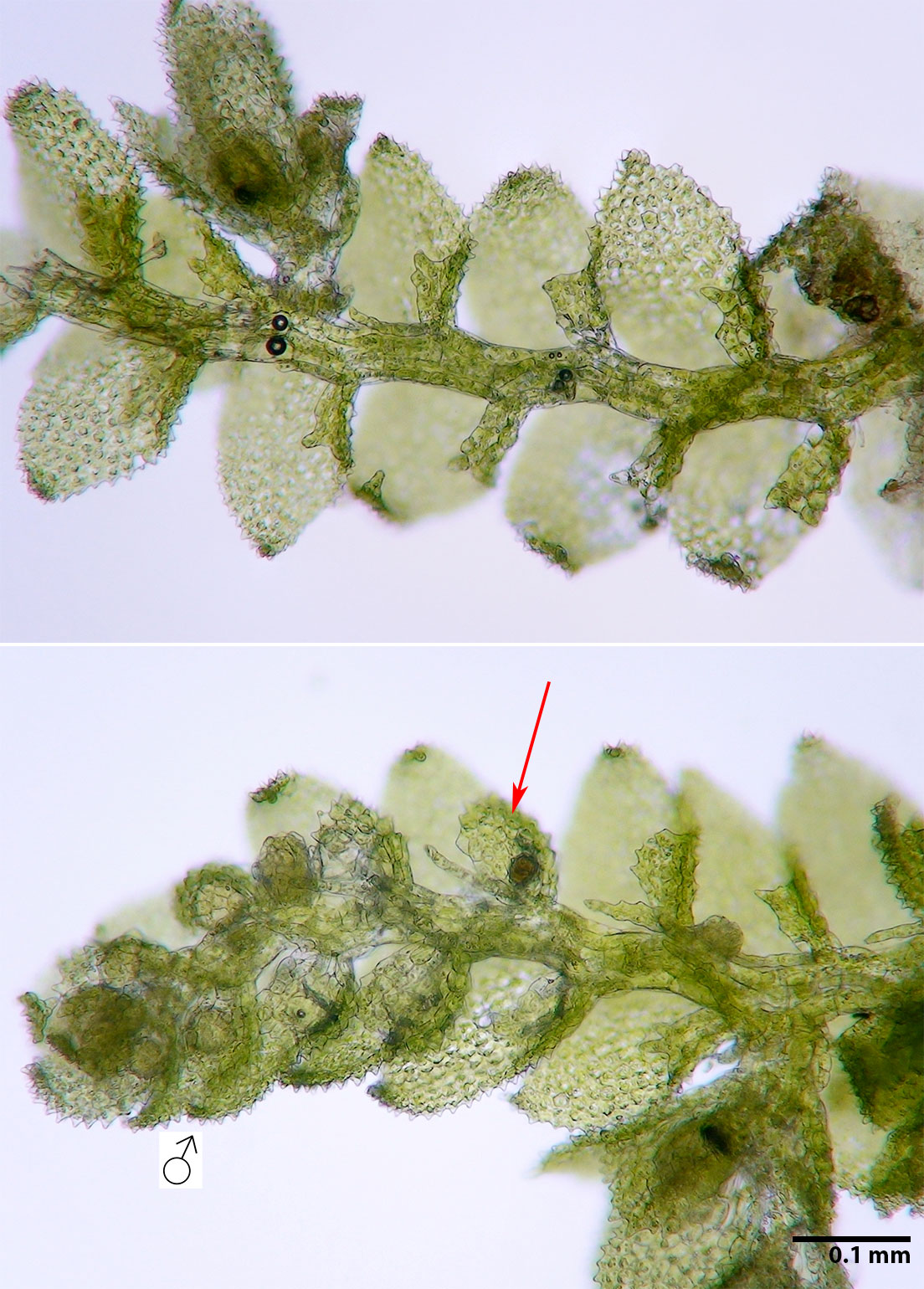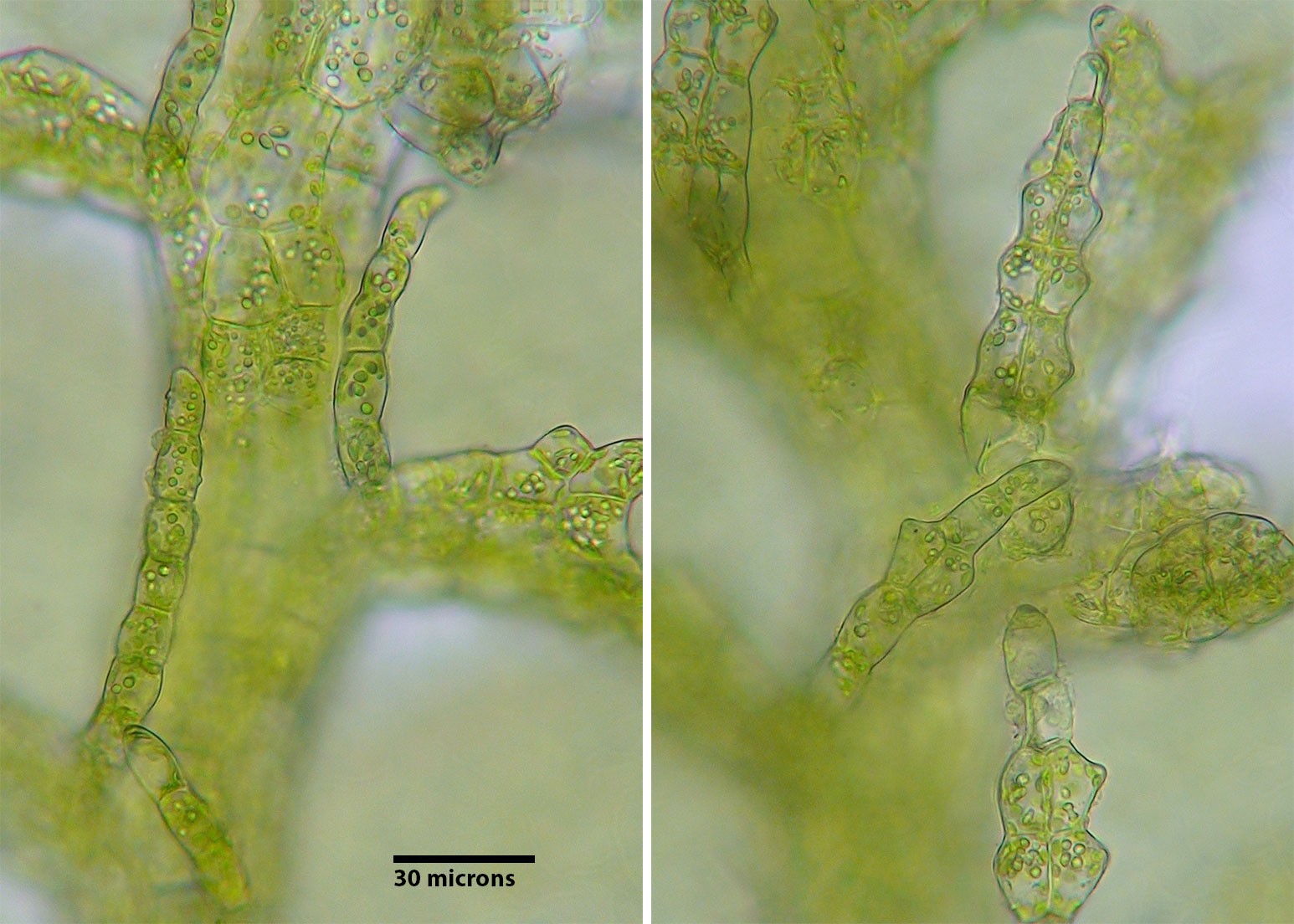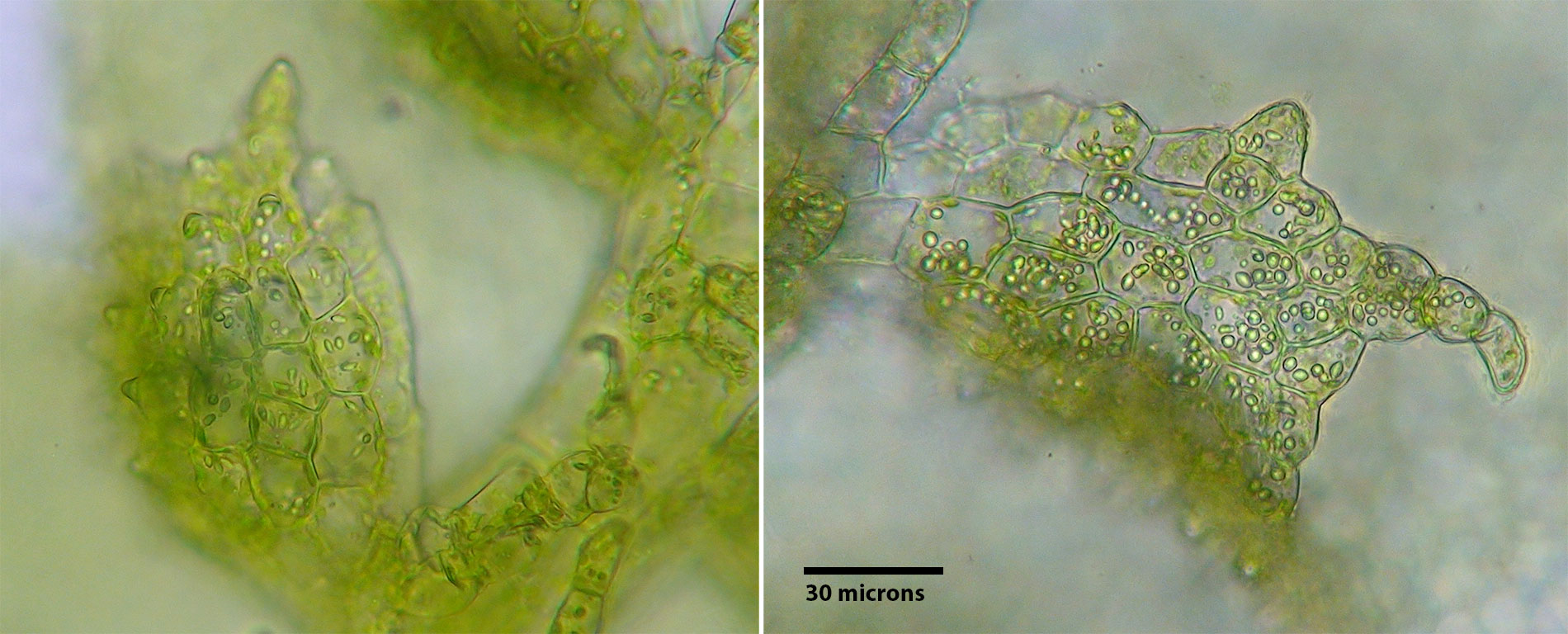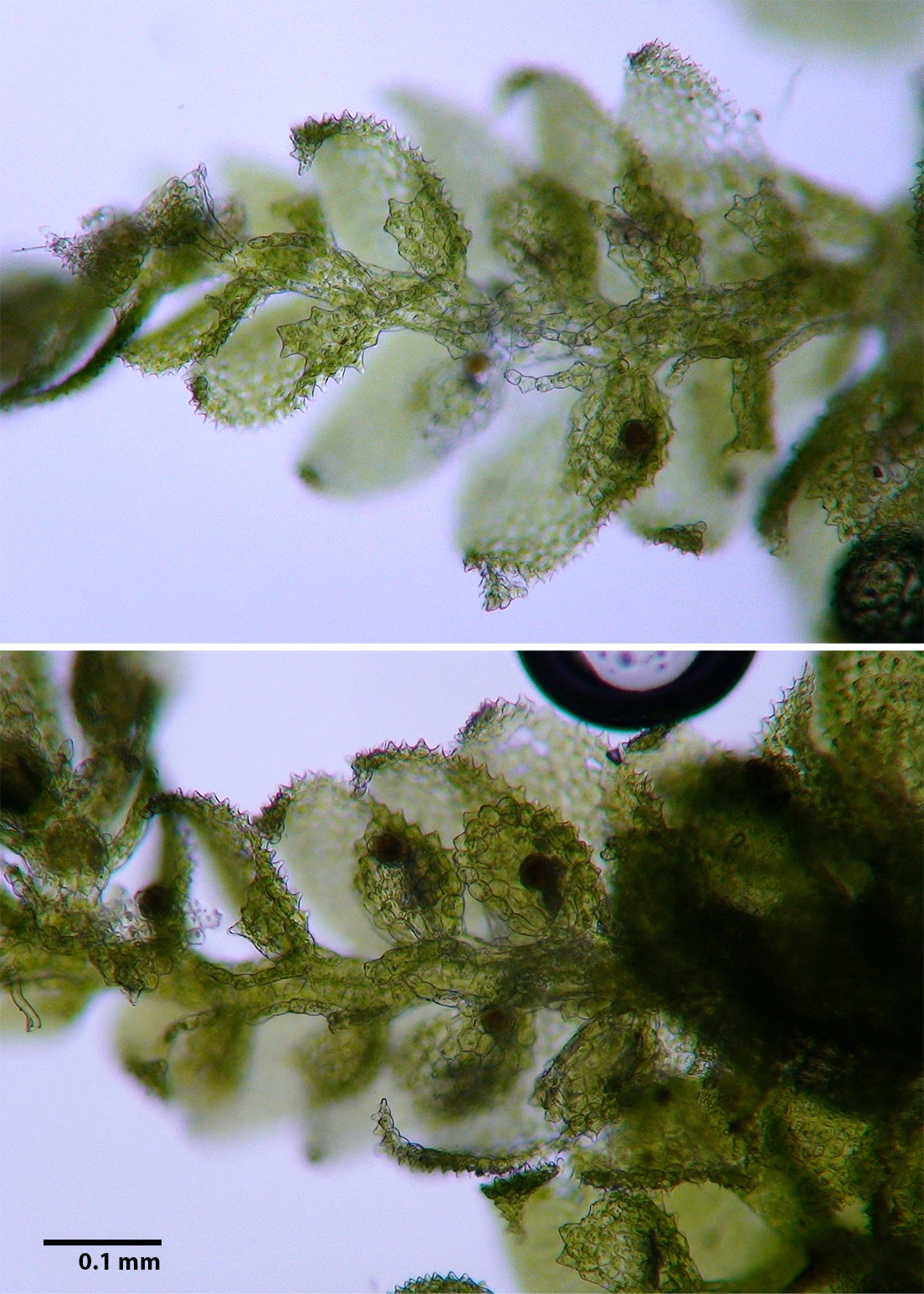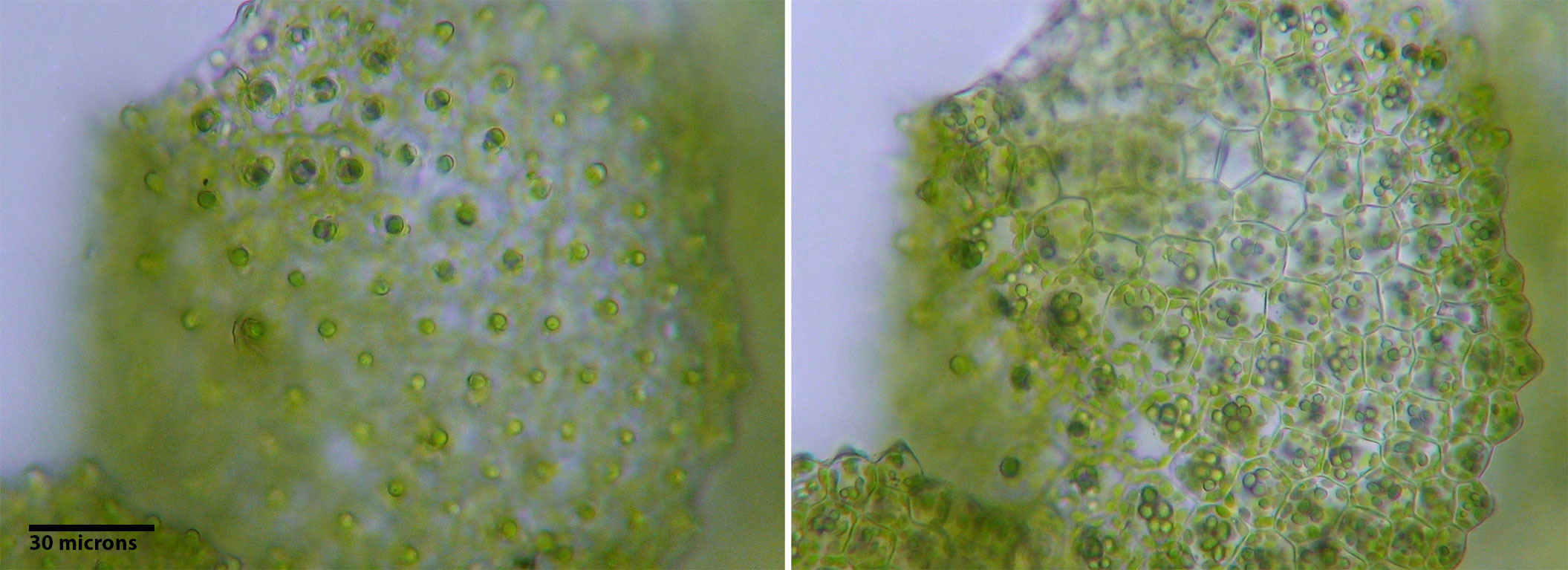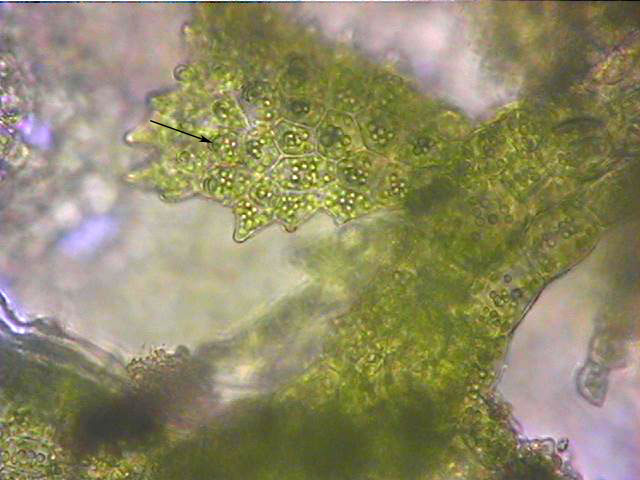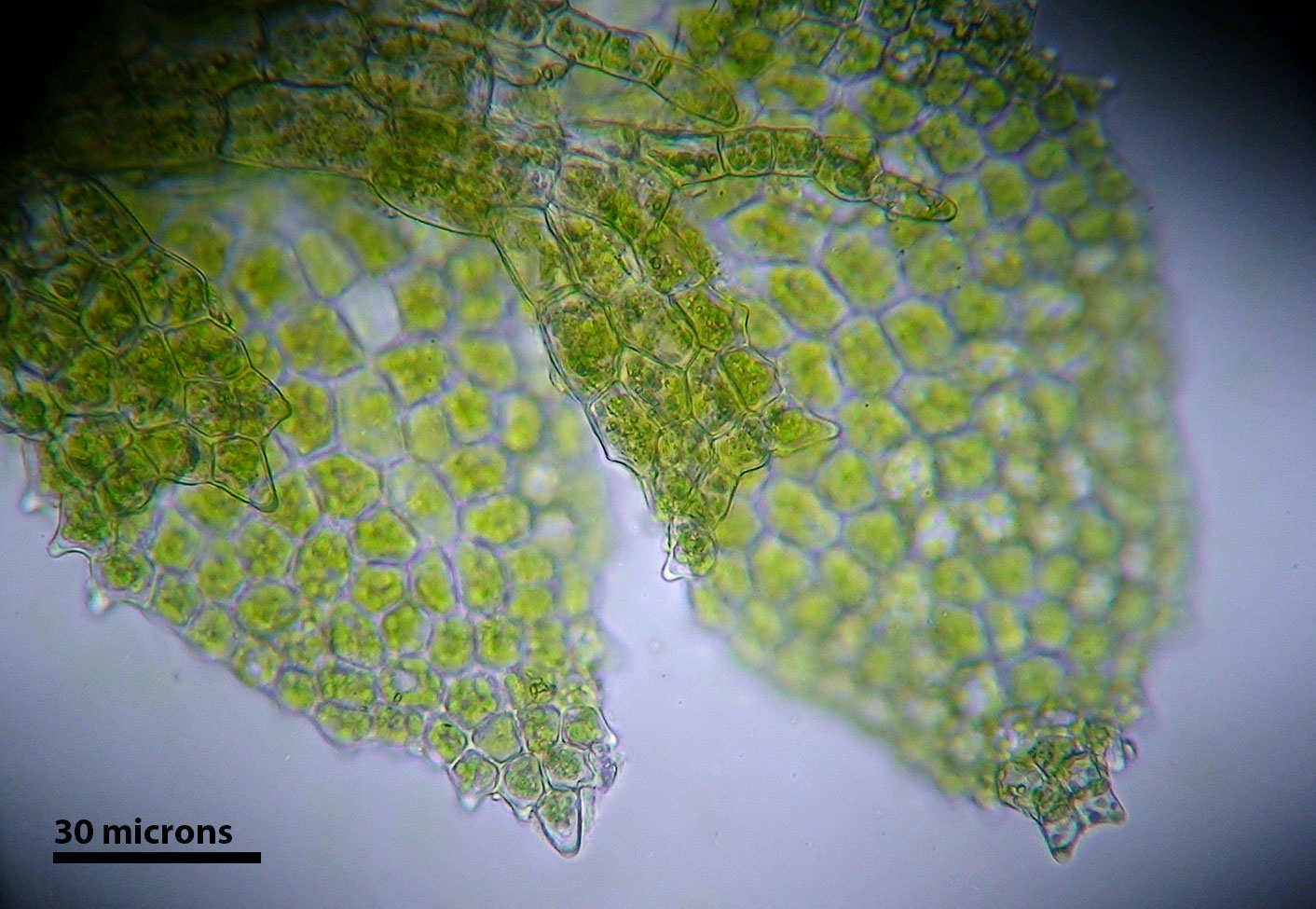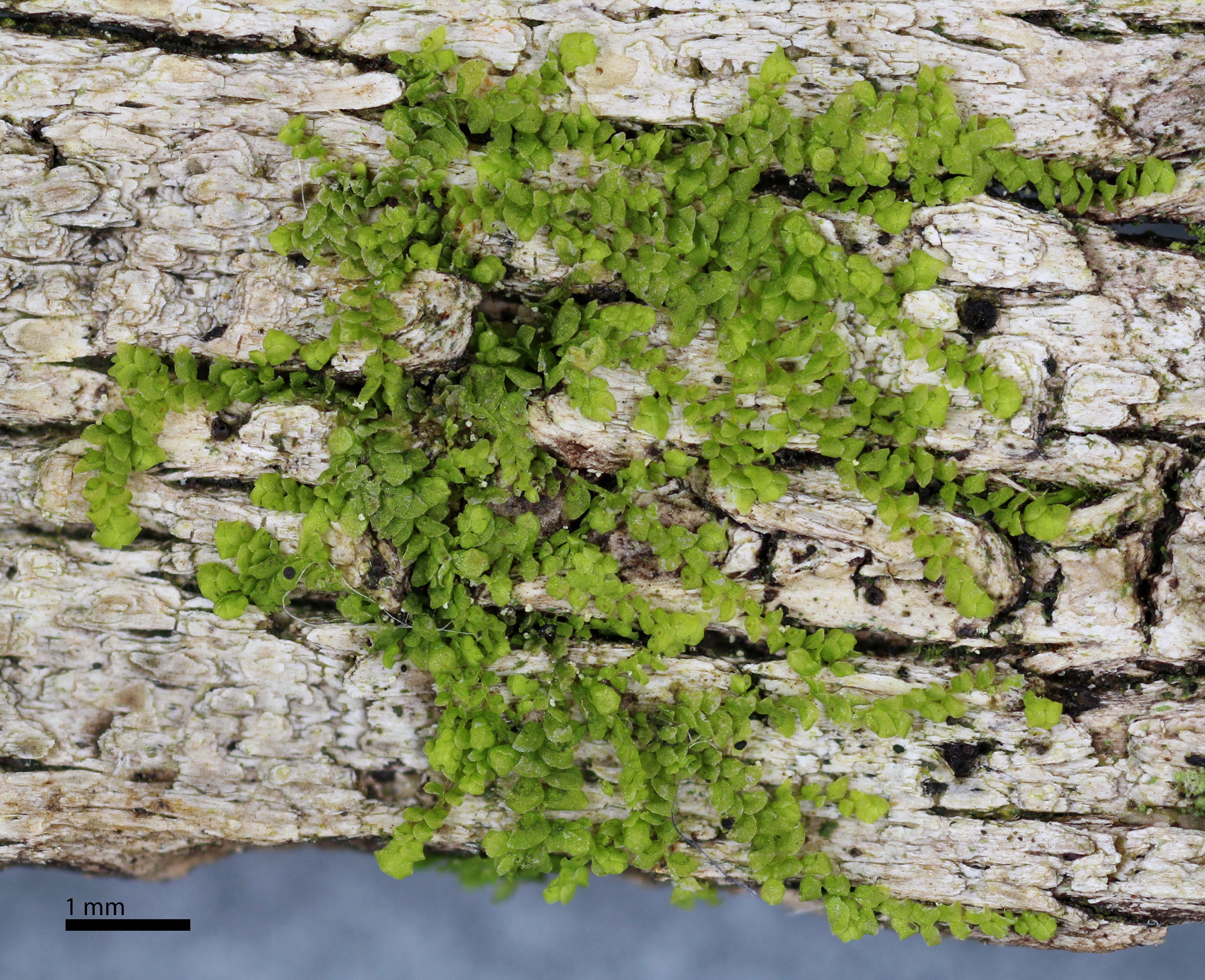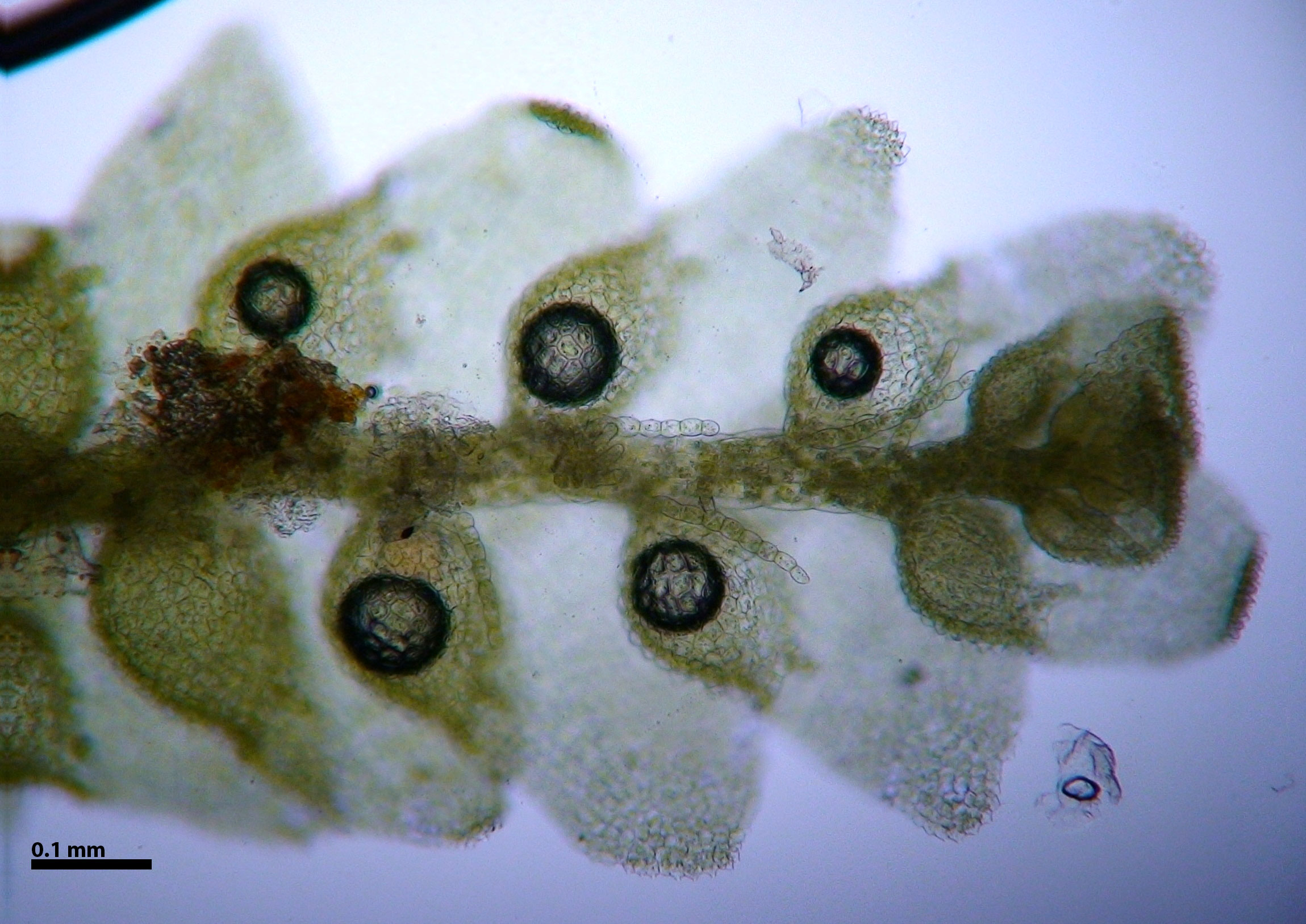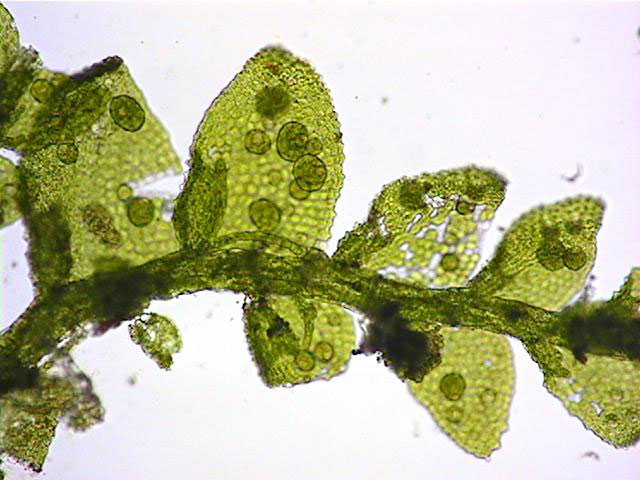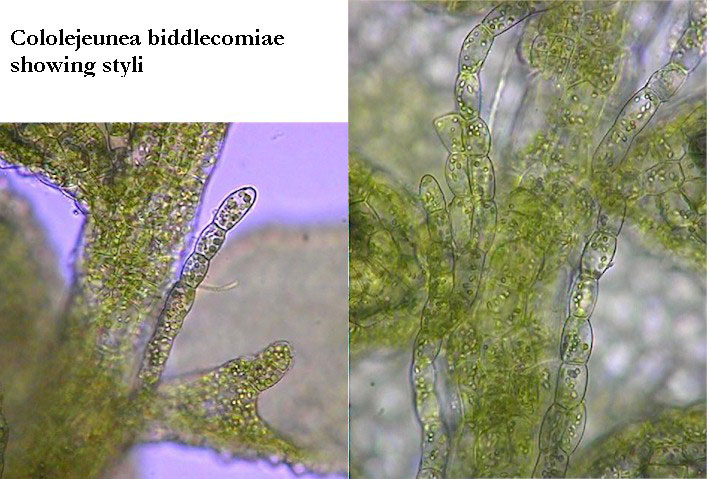Cololejeunea ornata A. Evans
Family: Lejeuneaceae
Synonyms
none recent
NatureServe Conservation Status
G2G4
Distribution
North America. U.S.A. (Alabama, Florida, Georgia, South Carolina, Tennessee). Asia. (China, Japan, Pakistan). Alam et al. 2016; He et al. 2011; Schuster 1980; Zhu and So 2001.
Habitat
Known from a few locations in the Blue Rdige (more widespread elsewhere in the Southeastern U.S.): e.g. "weakly calcarious boulders," Eastatoe River gorge, Pickens County, South Carolina; occurring with Cololejeunea biddlecomiae & Porella japonica subsp. appalachiana (Schuster 1980), ca. 1400 ft. elevation.
In the Southeastern U.S., the species appears confined to calcareous rock, occurring either directly on the rock or upon other bryophytes (mosses, leafy and thalloid liverworts) growing on rock. In China, known to occur as an epiphyll upon the leaves of vascular plants (Zhu and So 2001). An epiphyllous occurrence may yet be discovered in the U.S. (Risk et al. 2011), and in fact a specimen, M.L. Hicks 8405 DUKE, bryophyteportal, is labeled as "epiphyllous on Trichomanes petersii."
Brief Description and Tips for Identification
Occurring as isolated shoots over other bryophytes or forming thin mats over calcareous rock; individual shoots <0.5 mm wide; leaves complicate-bilobed with prominent styli (a stylus is a narrow appendage between the leaf lobule and the stem); underleaves absent. Outer surface of leaves and perianths papillose, each cell bearing a single, large papilla.
Monoicous. Usually fertile.
Cololejeunea is one of six genera of Lejeuneaceae known to occur in the southern Appalachians. Unlike other regional Lejeuneaceae, Cololejeunea lacks underleaves. Of the four species of Cololejeunea known to occur in the southern Appalachians only two, C. biddlecomiae & C. ornata, possess papillose cells and well developed styli. Cololejeunea biddlecomiae, a very common species, lacks the distinctive, "sharp" texture of C. ornata. This textural distinctiveness is created by the combination of ornate vestiture and narrower leaf tips. The surface topography of exposed leaves appears sharply roughened due to the taller papillae. C. biddlecomiae is a slightly larger plant with less narrow leaf tips. Collectively, these distinctions as seen with a hand lens, create a recognizable pattern.
When first learning to recognize the species, lab study with a compound microscope is required to discern the critical features that definitively separate C. ornata from C. biddlecomiae. While lacking in C. biddlecomiae, the following should be found in C. ornata: 1) the face of some lobules will have cells that are papillose; 2) some styli may have a few cells that are papillose; 3) absence of gemmae. While these distinctions may seem slight, the two species are very different in appearance.
Salient Features
- Outer surface of leaves and perianths papillose, each cell with a single papilla
- Face of some lobules bearing some cells that are papillose
- Absence of gemmae
References
Alam, J., Ali, I., Karim, S., Islam, M. U., and Ahmad, H. 2016. Check list of Anthocerophyta and Marchantiophyta of Pakistan and Kashmir. Plant Science Today, 3(2), 226-236.
He, Q., and Zhu, R. L. 2011. Spore output in selected species of Lejeuneaceae (Marchantiophyta) from China. Cryptogamie, Bryologie, 32(2), 107-112.
Risk, A. C., Richardson, C., and Davison, P. 2011. Epiphyllous bryophytes in the Appalachian Plateau of Kentucky and Tennessee, USA. The Bryologist, 289-297.
Schuster, R.M. 1980. The Hepaticae and Anthocerotae of North America East of the Hundredth Meridian. Volume IV. Columbia University Press, New York
Zhu, R. L., and So, M. L. 2001. Epiphyllous liverworts of China
